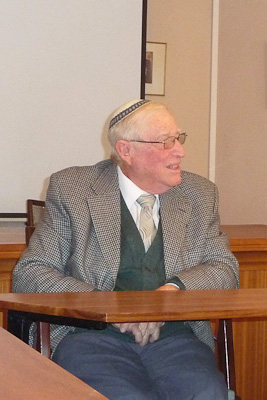 |
| Mr Ronnie Rosen, leader of the Jewish community in Bloemfontein. |
The Inter-Religious Forum (IRF) of the Faculty of Theology at the University of the Free State (UFS) has started a discussion series which offer the opportunity to different religions to introduce themselves. According to Rev. Maniraj Sukdaven from the Department of Religion Studies at the UFS, the purpose of the discourse series is to get to know more about one another’s religion within an atmosphere of respect.
During the last IRF meeting, Mr Ronnie Rosen, leader of the Jewish community in Bloemfontein, gave a talk about the Jewish religion. According to him there is a wide range of Jewish people.
“The one thing, however, that all Jewish people have in common is the Torah or Law-Book. There are 613 instructions that help a Jewish person to organise his life according to the Jewish way of life. For example, a Jewish person who wants to obey the Torah would not consume dairy products and protein together. This life style is not only regarded as a religion, but a way of life, which constantly makes a person aware of his relationship with God,” he explained.
Another interesting fact that transpired during the discussion was that, for the first time in the history of the world, there are more Jews in Israel than in other concentrated areas across the world. Five (5) million Jews are currently living in Israel, while the remaining 10 million Jews are spread across the world.
During the meeting of the IRF forum, persons from amongst others the Baha’i, Hindu and Christian religions participated in the discussion. Other religions that have already been discussed are Hinduism, Christianity, Islam and Rastafarians.
The IRF will also be involved in the structuring of course material about the different religions and an inter-religious conference will be part of the IRF’s programme in 2011.
The IRF is the only institution of its kind at South African universities.